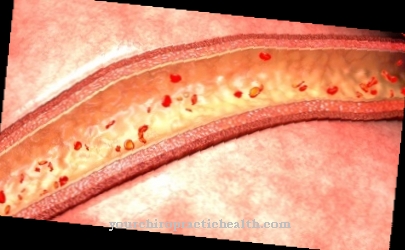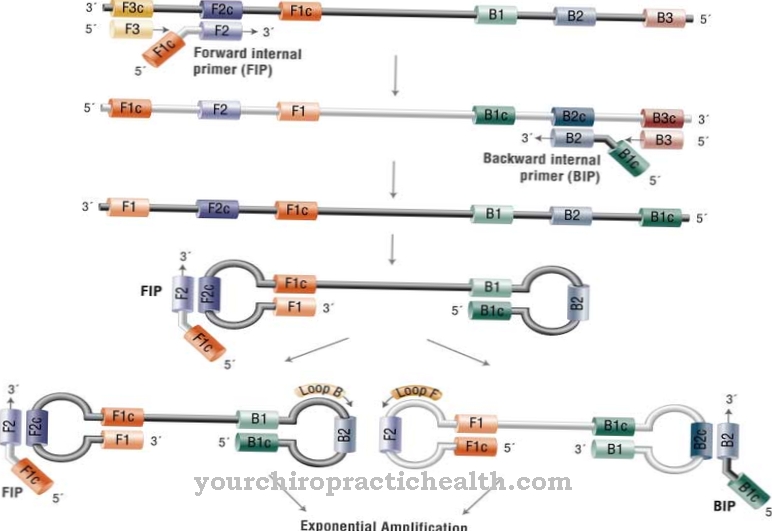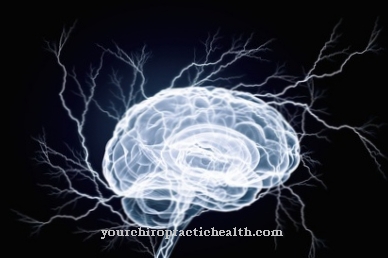While there is no shortage of scientific facts about primary metabolism, this is the Secondary metabolism still largely unexplored. It describes all metabolizations that do not directly serve to sustain life. The boundary between primary and secondary metabolism is often blurred. It is particularly important in the plant world, but is also relevant for animals and people. It is still largely unexplored in this regard, which is why this article describes its importance using the example of plants.
What is the secondary metabolism?

The primary metabolism includes all processes that ensure the vital function of an organism. The primary metabolism synthesizes vital substances such as amino acids, fats and sugar and is the same in almost all living things.
Components of secondary metabolism are, for example, fragrances with which the flowers of violets, lilies of the valley or roses attract their pollinators or the dyes that give fruit color or indicate their degree of ripeness.
The secondary metabolism includes all chemical compounds that are produced by the plants themselves. These are secondary plant substances, also known as bioactive substances or antioxidants. Around 200,000 such substances are known to date, but not yet adequately researched.
Secondary substances are often the most noticeable features of a plant, but they are unnecessary for its growth and development. Secondary substances are individual and are often only found in a certain type of plant. The "agitators" of pepper, for example, are only found in tropical pepper species and morphine is only known as a secondary substance of the opium poppy.
People have known a lot about the healing or poisonous effects of various plants for a long time and, based on their experience, use them as a remedy for many diseases. How and why some could heal certain plants and kill others in turn was largely unknown until the first half of the last century. Finally, chemists also dealt with the various plant constituents. In 1806, the Paderborn pharmacist Friedrich Wilhelm Sertürner was the first to isolate morphine from opium.
It was not until the beginning of biosynthesis research after the Second World War that the knowledge grew as to which role secondary metabolism plays in the evolution of plants. In this respect, the secondary metabolism also ensures the survival of the organisms, albeit not as immediately as the rapid metabolism does.
Function & task
Today, science agrees that without secondary metabolism there would be no survival of plants. Every plant develops its survival strategy with the help of chemical agents. Predators are fought by deterring them, preventing them from eating or using poison. Antibacterial or fungitoxic substances are used to prevent the spread of microbes. All of these substances have emerged in the course of evolution, are constantly adapted to changing environmental conditions and sometimes also reversed from negative to positive. For example, a plant whose toxic barrier has been overcome by an insect can become its preferred fodder plant or also serve as an egg-laying plant, whereby it develops into a special niche in life.
Many studies have shown that the secondary metabolites produced in specialized plant cell types have an impact on a large number of metabolic processes in humans. They do not belong to the essential nutrients, but they are said to have a wide variety of health-promoting effects. For this reason in particular, the German Society and all health insurances have been recommending generous consumption of vegetables and fruit, legumes and nuts, and whole grain products for years. The ingredients of vegetables and fruits are important to us humans because they protect against free radicals with their secondary plant ingredients, the antioxidants.
So far, research has concentrated on around 30 of the plants that are mainly consumed worldwide and their secondary phytonutrients. Each plant contains a limited but large number of different substances, for example apples with 200 to 300 and tomatoes with 300 to 350 substances. Compared to fruits, vegetables contain both more vitamins and phytochemicals. The concentration in the shell or in the kernels is particularly high.
Illnesses & ailments
If people take in too few of the secondary metabolic products of plants, deficiency symptoms can arise. The substances have a preventive effect in this regard. In the case of existing problems, the absorption of secondary metabolic products can alleviate symptoms and illnesses.
A well-known subgroup of polyphenols are anthocyanins. They are mainly found in blue, purple, red, or blue-black fruits and vegetables. They are found in many dark blue or red cherries and berries, in aubergines, in red onions and also in red cabbage. Anthocyanins particularly protect against direct sunlight. Anthocyanins are considered to be particularly effective antioxidants. For example, they protect our cells from inflammation and degeneration (cancer).
Astaxanthin is considered a particularly effective antioxidant. It belongs to the group of carotionoids and gives tomatoes and carrots, for example, their red color. For us humans, astaxanthin is important as a source of strength and to protect the skin, joints and especially the eyes (macula) from free radicals.
The seeds of grapes contain OPC (oligomeric procyanidins) resveratol and quercetin. All three also belong to the polyphenols. OPC is arguably the strongest known antioxidant. With regard to the skin, OPC is considered to be an anti-aging miracle cure; it can reduce wrinkles and accelerate wound healing. It protects the heart, blood vessels and eyes. Resveratol and quercetin also help fight cancer; they can lower blood pressure and regulate cholesterol.
The pomegranate has always been considered a religious symbol of fertility. Today this particular fruit is of great scientific interest. With its special biochemical composition, the pomegranate is considered to be the best known source of antioxidants to date. It not only has a particularly high concentration of vitamin C, potassium and vitamin B5 (pantothenic acid), but also contains many polyphenols and tannins that protect against diseases. Its positive effects on protasta and breast cancer are currently being intensively researched.
Phytoestrogens include lignans (components of flaxseed). A cancer-inhibiting effect is also attributed to them.

.jpg)

























